Ahhh, the 1 minute chart…probably the most popular time frame among day traders.
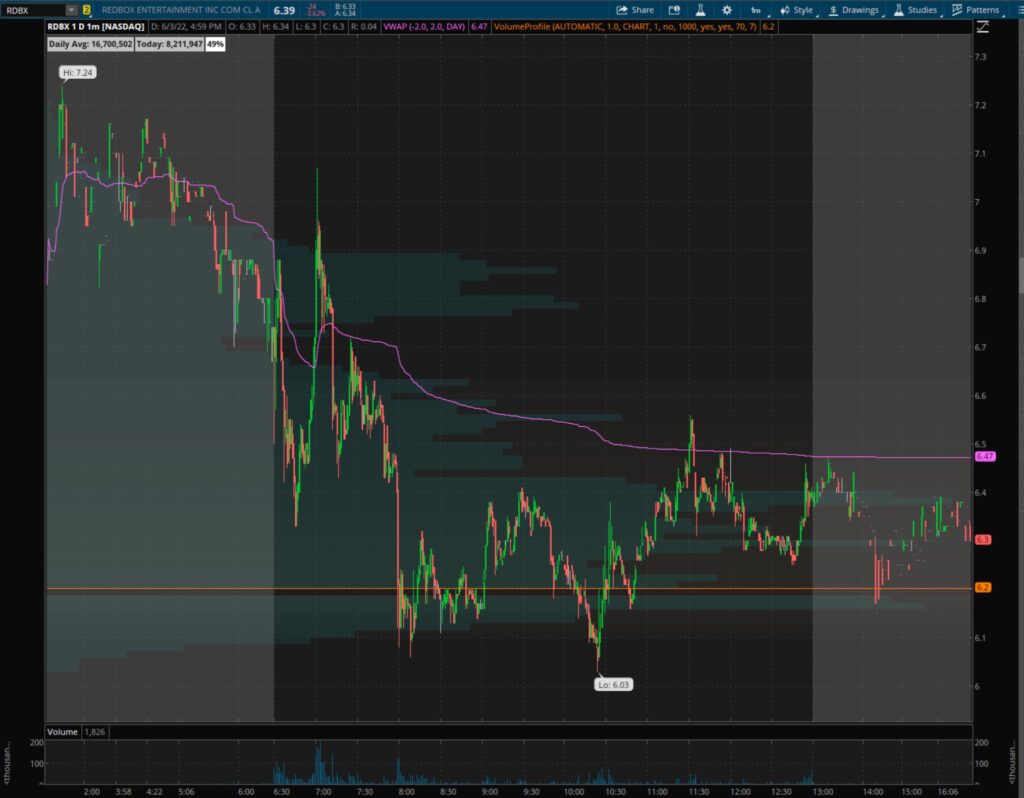
But what if I told you that you might benefit from switching to a higher time frame?

In fact, I’m here to make the case that you might want to ditch 1 minute charts altogether. I no longer use 1 minute charts in my trading. I’m going to outline all the pros of using higher time frames, along with some of the cons. Obviously whether you use 1 minute charts or not will depend on a few factors (like whether you’re a scalper or not), but I hope to show you that, at the very least, including longer time frames into your charts can be very useful. So, let’s get to all the pros of using longer time frames.
THE PROS
1. Less Fakeouts
There’s a lot of noise with intraday trading. There’s also a lot of fakeouts where a stock will start to move in one direction, only to reverse and go the other. If you’re using a short 1 minute time frame, it’s very easy to get faked out and caught on the wrong side of a trade. Let’s take CYN as an example from April 21, 2022. Here’s the 1 minute chart at 13:50 EST.
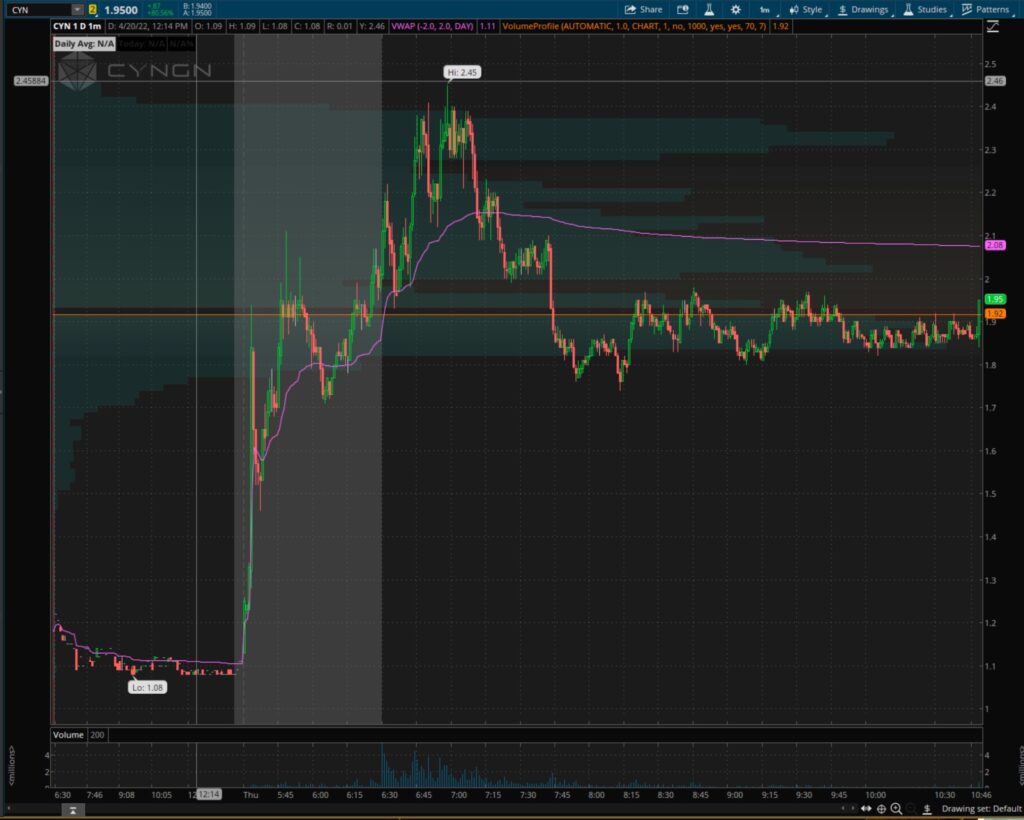
If you’re focused on the 1 minute chart, you’ll notice the nice base in the mid 1.80’s. Plus, it was a heavily shorted stock as it had gapped up quite a bit, and it was starting to break with volume off of the base. You might jump in and go long, or quickly cover your short if you were short. But let’s look at what happened one minute later.
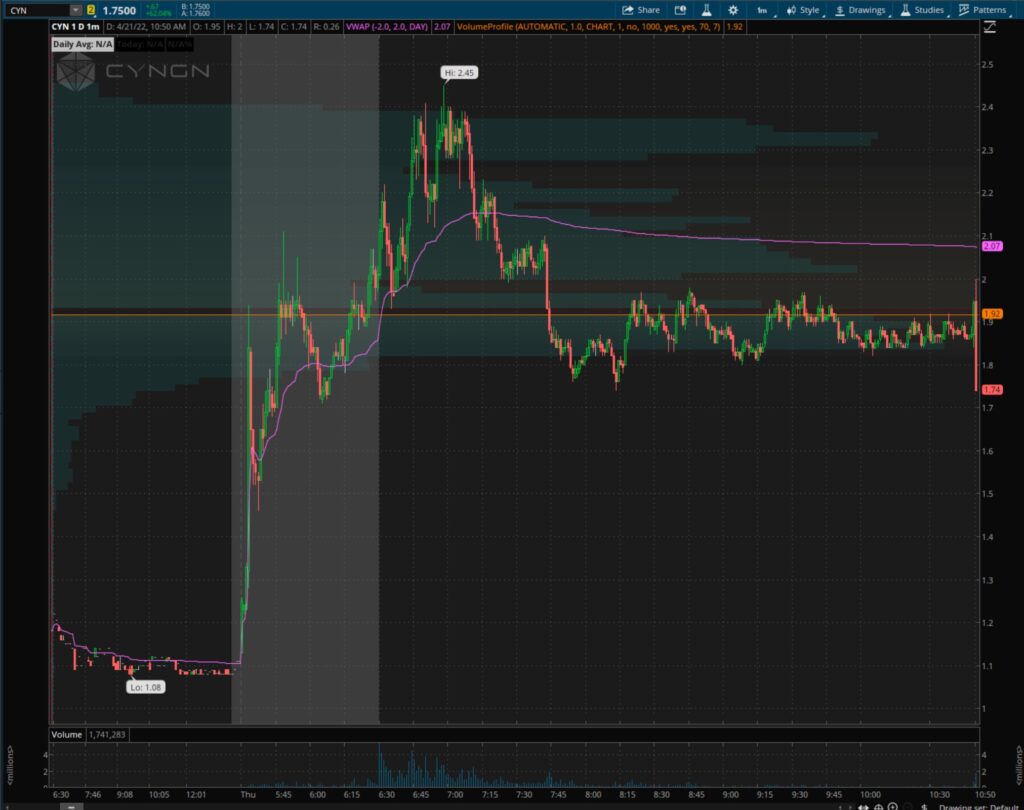
HUGE STUFF. The stock touched 2 with volume, only to suddenly experience a rug pull. If you had longed, you’d now be buried. If you had covered your short, you’d now be pissed.
But what if you had used a longer time frame, and waited until the close of a candle before you decided to make any trading decision? Here’s what the 15 minute chart looks like. If you had used a 15 minute chart, and decided to wait for the close of a 15 minute candle before making a trading decision, you would’ve avoided getting faked out.
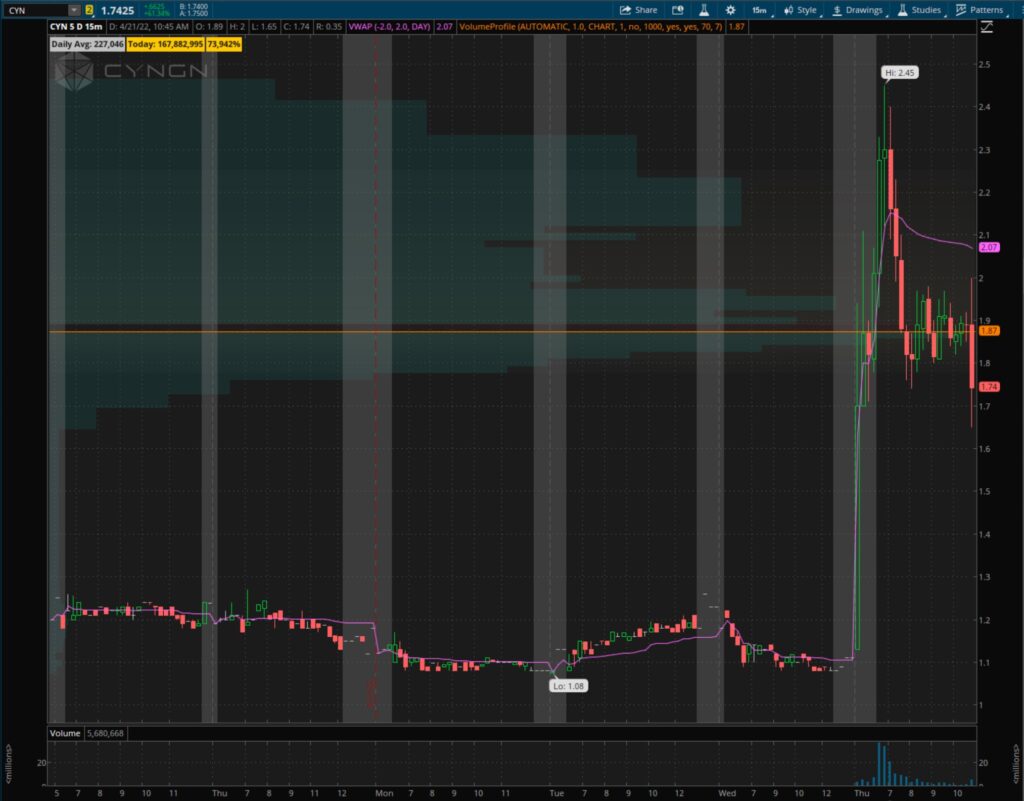
2. Less Trades and Less Chance of Losing Streaks/Big Drawdowns
If you use longer time frames and wait for the close of candles before you make trading decisions, you’re automatically in a situation where you’ll make less trades. On a 1 minute chart, there are 390 candles during the regular trading hours. On a 5 minute chart, there are 78 candles. On a 15 minute chart, there are 26 candles. Thus, you’ll make less trades using higher time frames. This means you have a lower chance of multiple losing trades in a row, and a lower chance of big drawdowns.
Let’s use NKTX as an example from April 25, 2022. If you’re using the 5 minute chart, you might be tempted to short 5 minutes out of the open when you see the failed move above premarket highs and how longs got stuffed out of the open.
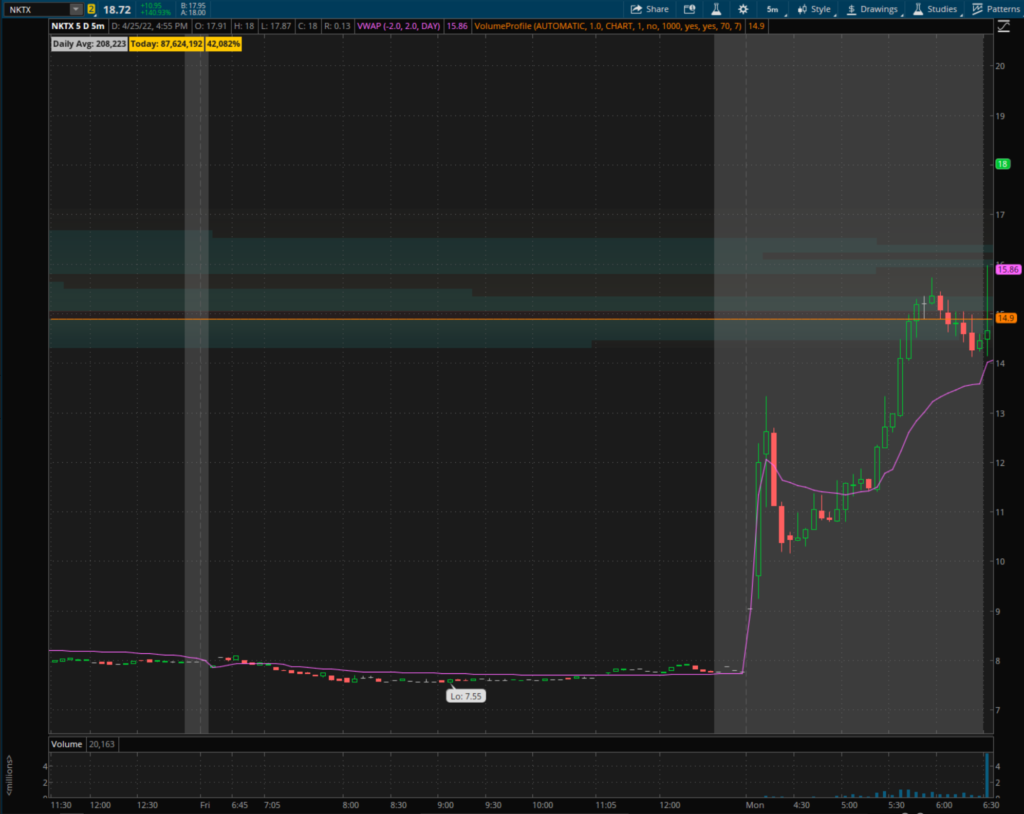
After repeated failures/stuffs of $15, you might even add to your short or kept trying to short multiple times.
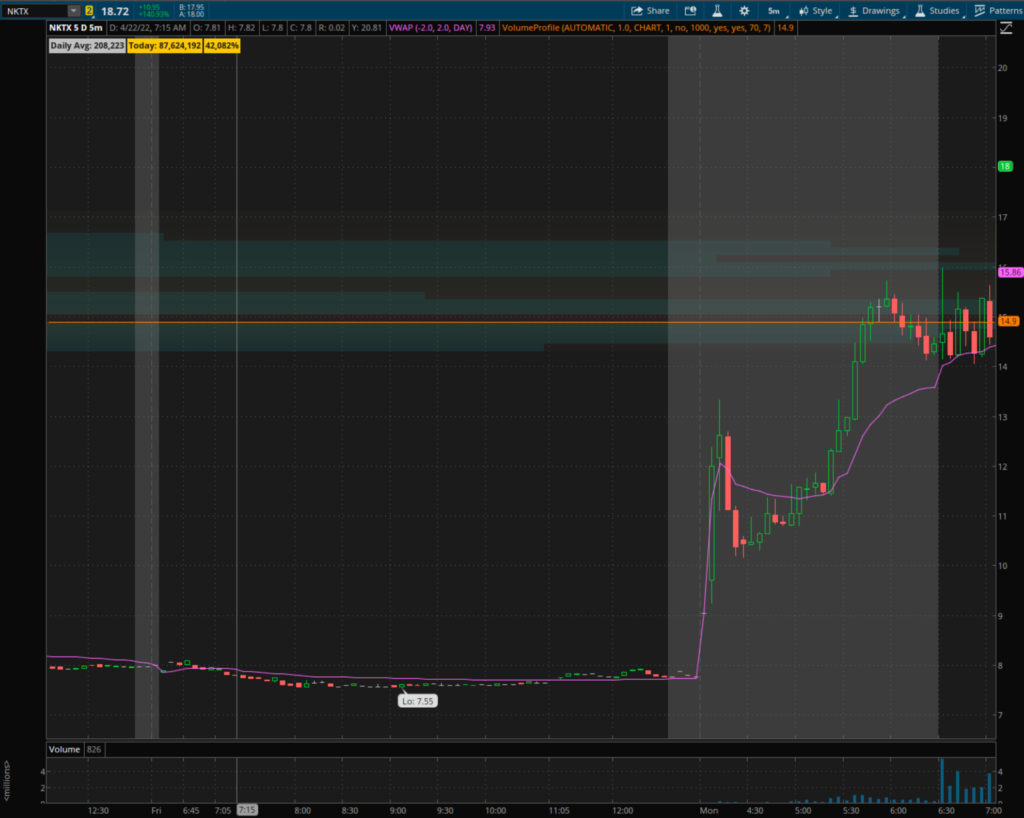
But then the stock bases and breaks to new highs, and you take a loss (or perhaps even multiple losses if you kept trying to short every $15 stuff move).
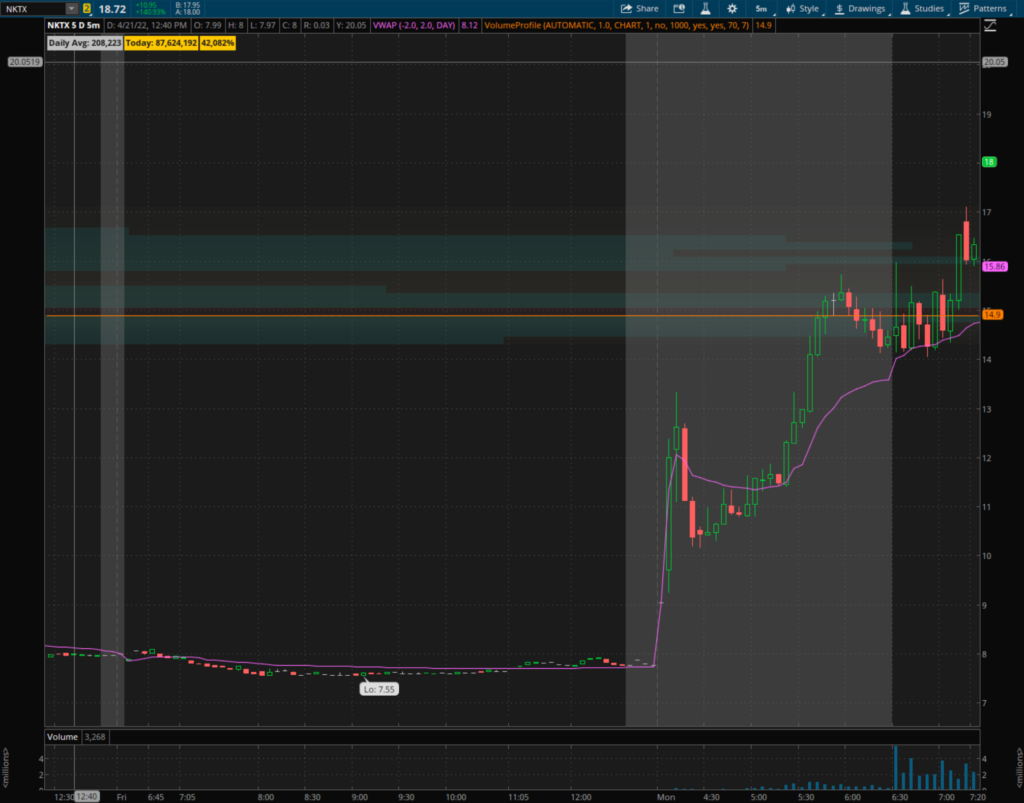
But what if you had used a 15 minute chart and waited for the close of each candle? You would’ve avoided multiple losses…in fact you would’ve avoided the short altogether.
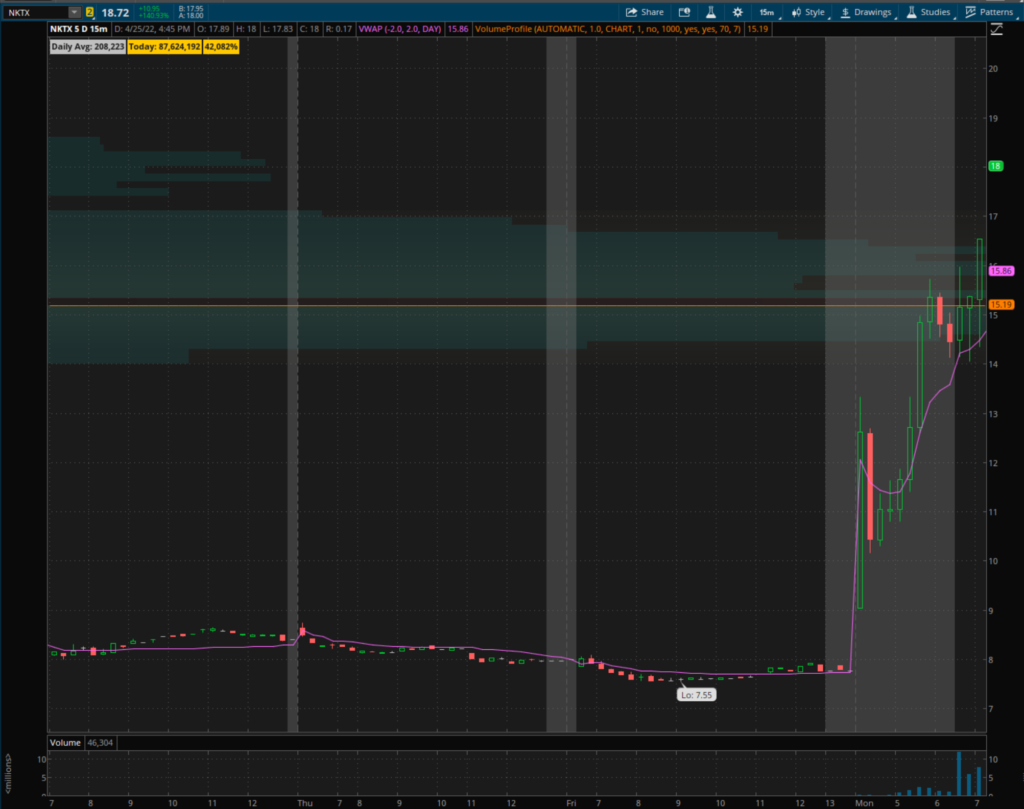
Less trades also means less commissions.
3. It Forces You to Be Patient
By forcing yourself to wait until the close of a candle on a longer time frame, it forces you to be patient and wait for the right setups. It can be very useful if you find yourself with an itchy trigger finger and you’re entering trades prematurely. You’ll be more likely to stay out of bad trades. It can also help you from being too early, especially on the short side, where short squeezes are often the result of shorts being too aggressive or too early on their shorts.
Let’s again look at CYN from April 21, 2022. If you’re using the 1 minute chart, you might be tempted to short 15 minutes after the open when the stock fails $2.20.
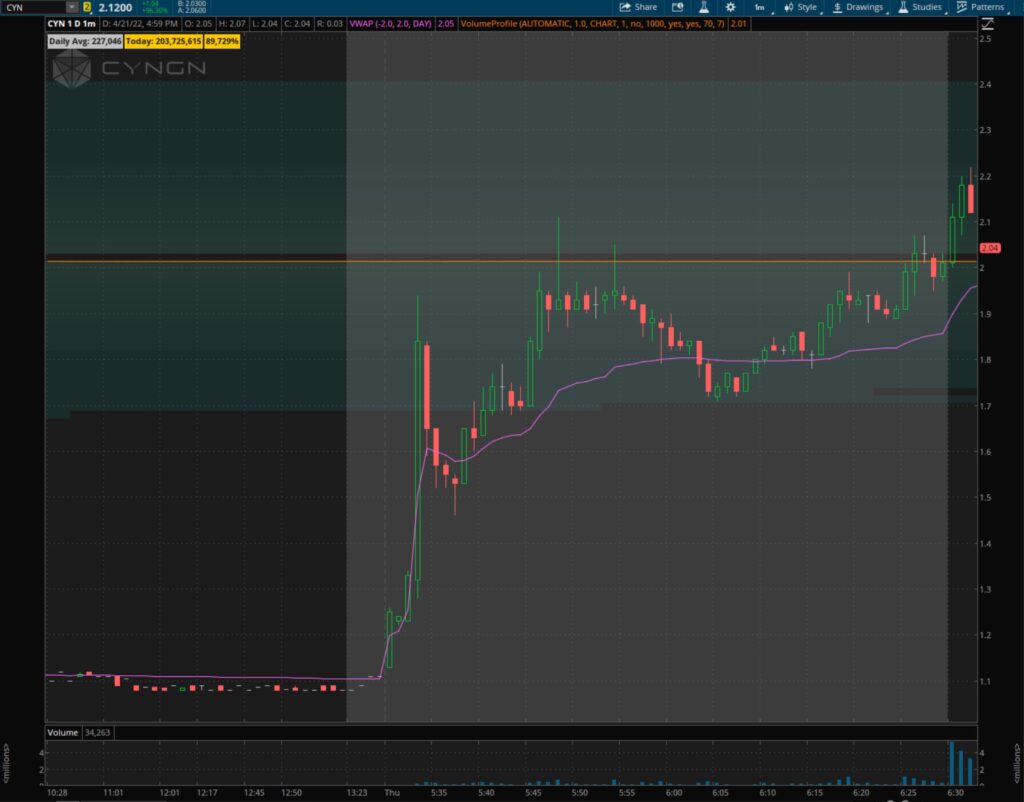
Now, if you’re a scalper, you’ll get about a 10-15 cent move here that you can cover into.
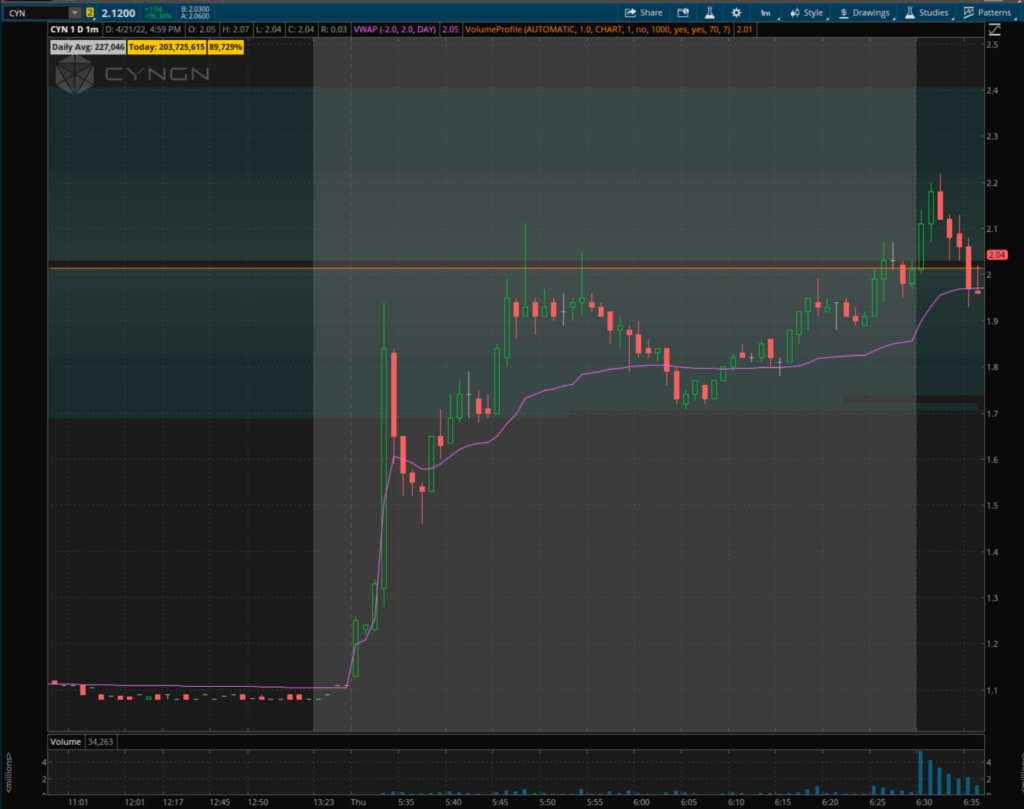
But if you’re not a scalper and you like to shoot for bigger moves, you’ll get stopped out.
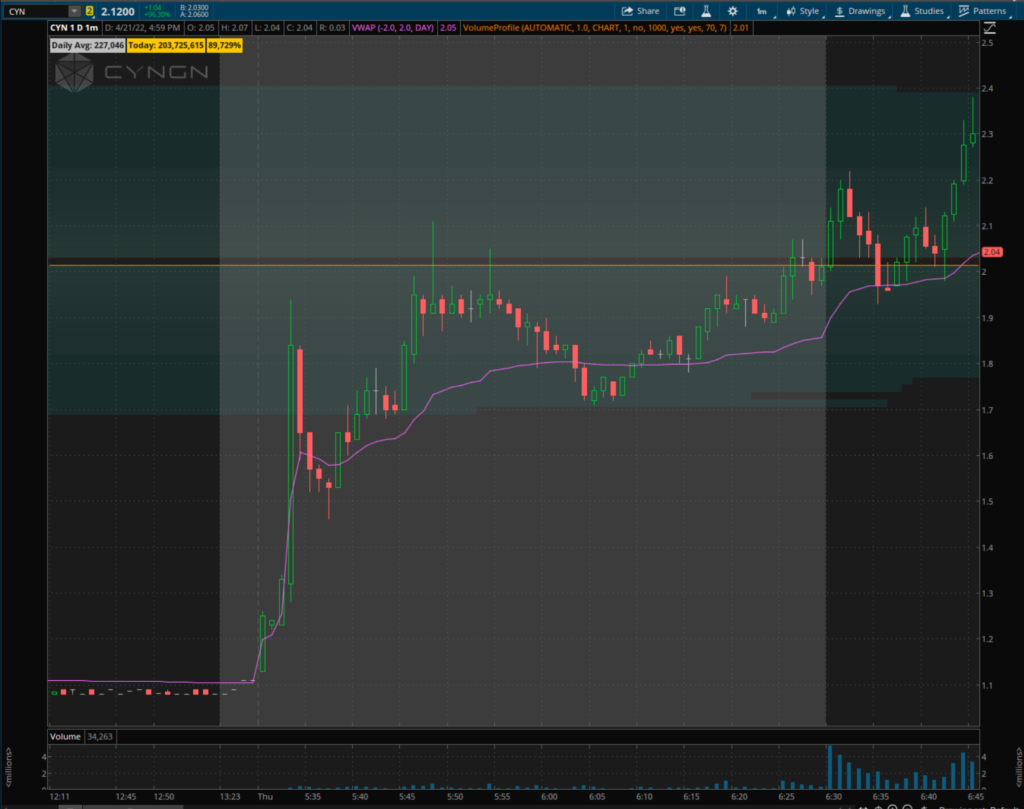
Then you might be tempted to short as soon as 2.40’s get stuffed.
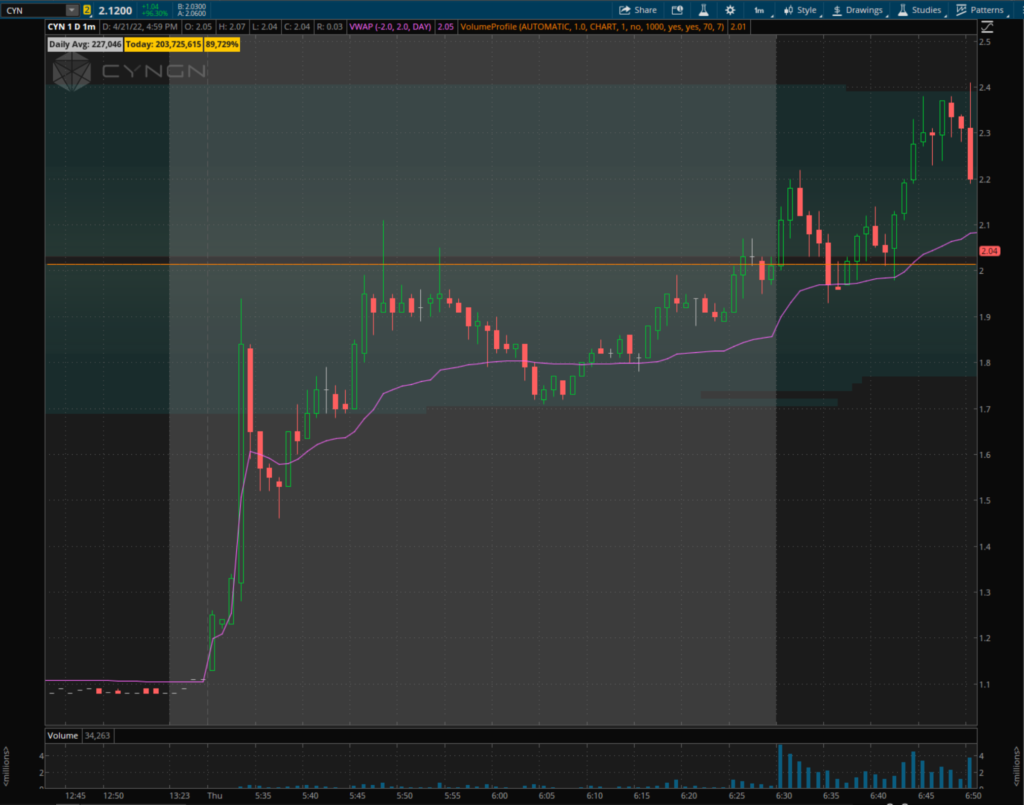
But if you don’t have a wide stop (let’s say you set your stop loss above the high of the stuff move), you’ll get stopped out again.
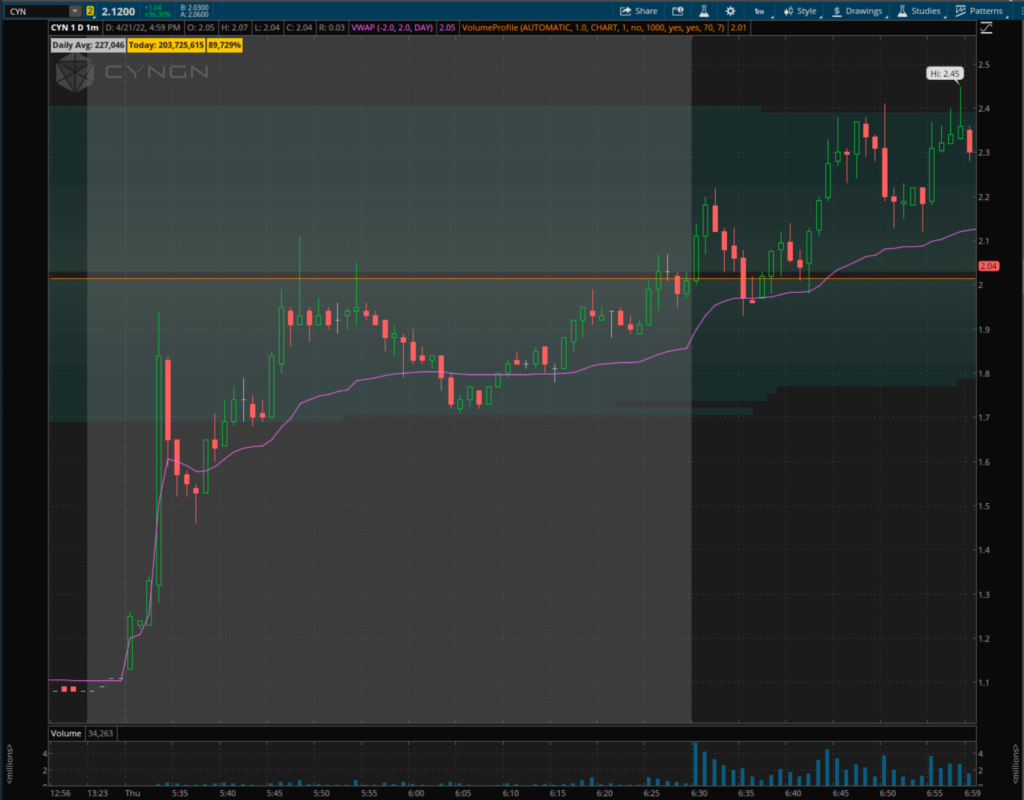
Thus, you’ve got two cases where you were too early on the short (assuming you’re not just trying to scalp). But what if you had used a 15 minute chart instead?
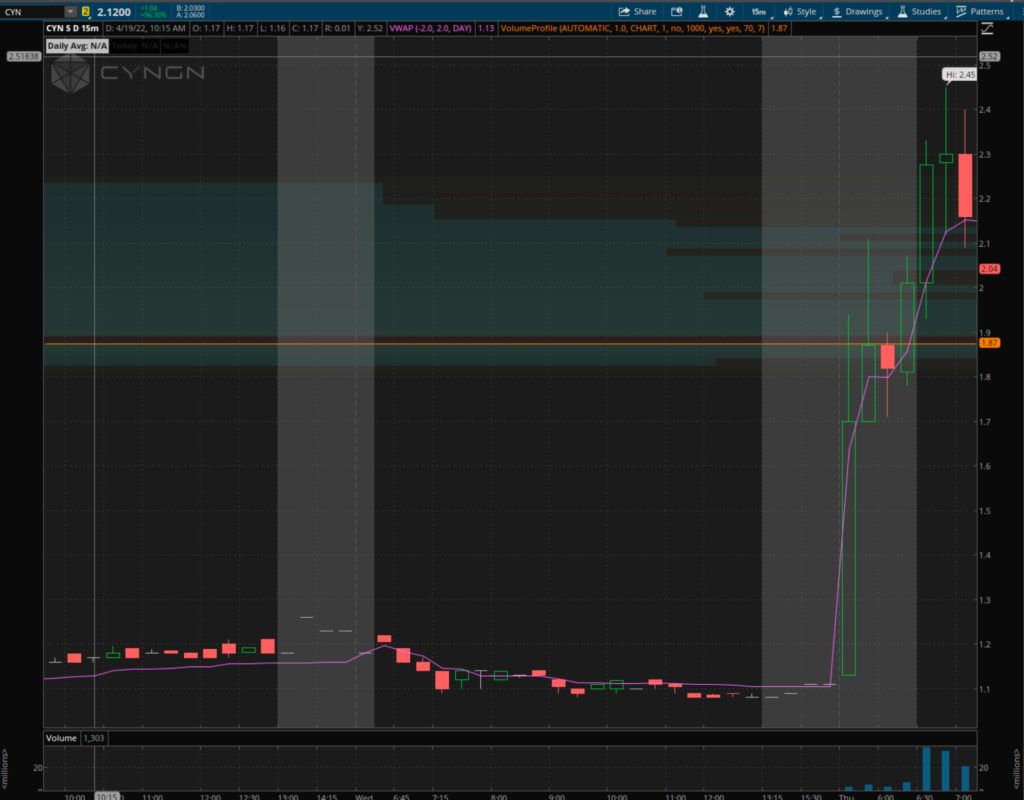
You would’ve avoided the first two shorts, and you would’ve been forced to patient and wait for the 2.40’s to truly top out. Then any short in the 2.10-2.20 range would’ve worked out, because the stock fell all the way to under 1.70.
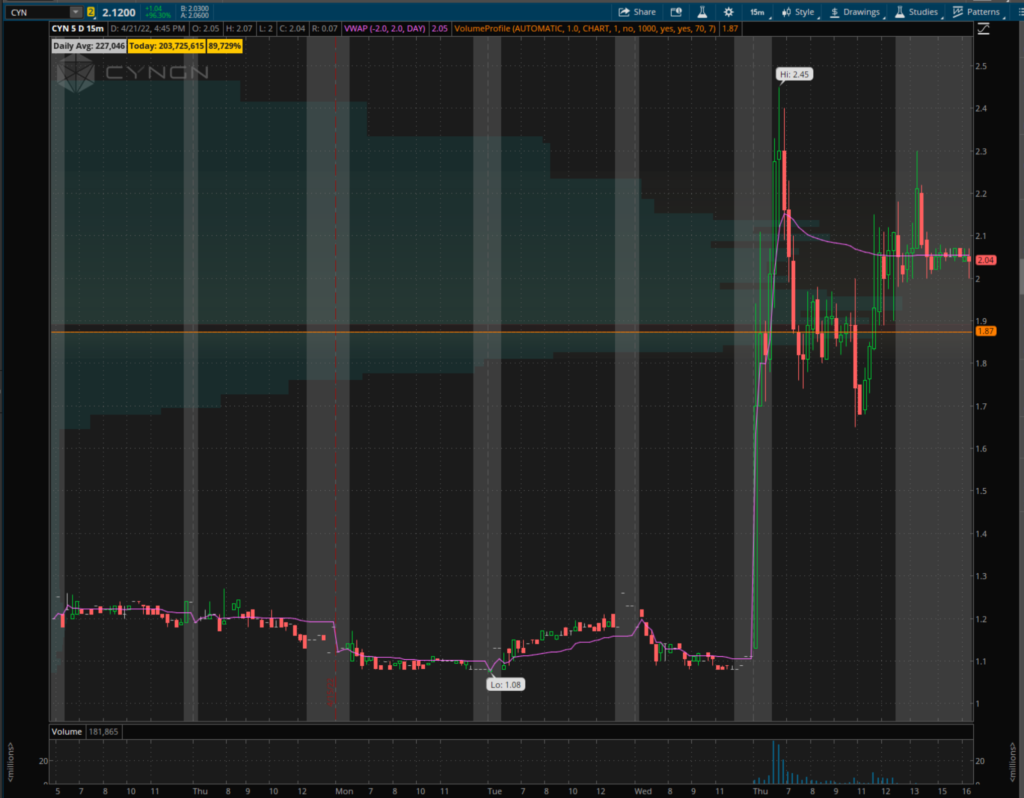
4. More Time to Carefully Assess Trade Setups/Less Time Focused on Screens/Less Chance of Rushed Decisions
If you force yourself to wait until the close of candles on longer time frames, it gives you more time to assess potential setups. You’ll see things more clearly. You’re less likely to make a rushed decision, and you can even step away from your computer in the middle of time intervals to focus on something else and come back when the close of a time interval is getting close. This can be advantageous for traders who are multitasking with other responsibilities during the trading day. For example, I’m on the west coast and sometimes have to help get my kids ready for school around 7:30 – 8:30 AM PST. Using longer time frames gives me chances to briefly step away from the computer to do this.
5. Allows More Scalability of Size
If you’re using longer time frames, you’ll naturally tend to have wider stops to avoid premature stop-outs due to intraday noise. The advantage of that is that your positions will be more scalable as your account grows. One problem with the smallcap market is that there are limits to scalability of returns. You can’t just keep increasing position size as your account grows. Eventually you’ll be taking on positions that are too large relative to the daily trading volume. This is particularly an issue if you’re a scalper and you’re using smaller time frames. However, if you’re using longer time frames, you can ultimately take bigger positions since your overall size will be smaller relative to the time frame you’re using.
Of course, longer time frames aren’t all pros. Let’s look at some of the cons.
THE CONS
1. You’ll Miss Some Moves
Forcing yourself to wait on longer time frames means you’ll sometimes miss a move. For example, a lot can happen on a 15 minute time frame, and sometimes by waiting you can miss an entry or even entire move. However, I’ve found for me personally it helps me stay out of bad trades more than the moves I sometimes miss, so it’s a net positive for me.
2. You May End Up Being Late on Entries in Some Situations
This is similar to #1. You might not miss a move, but you may not get the best entry when you wait on a longer time frame. That said, I’ve found that missing premature entries/bad trades more than makes up for the occasional lack of ideal entry.
3. Not A Good Method for Scalpers
If you’re someone who likes to scalp small moves, then longer time frames won’t make sense. You’ll miss too many moves using a longer time frame. That said, using longer time frames in conjunction with your 1-2 minute time frames may give you a better big picture of what’s going on and help with your scalping decisions.
4. Harder to Scale in/Scale out of Positions
If you’re a single entry/single stop loss trader, then longer time frames can work. However, if you’re someone who likes to scale into and out of positions, then you may need the smaller time frames to help guide those scales. That said, there’s still an advantage to simultaneously using longer time frames to give you a better big picture of what’s happening with a stock.
Give Longer Time Frames a Try
I no longer use 1 minute charts. I use mostly 15 minute charts, but some 5 minute charts for certain setups. I even use 30 minute charts for a few setups. I find myself trading more patiently by using longer time frames, and it works better for me as I’m someone who likes to hold out for bigger moves where small time frames just don’t make sense. It also works better with my lifestyle given my situation on the West Coast and my kids waking up soon after the market open.
This isn’t to say that longer time frames are best for all traders. You need to figure out what works for you. However, if you’re finding yourself constantly being too early on trades, or misreading a lot of setups, then give longer time frames a try.





